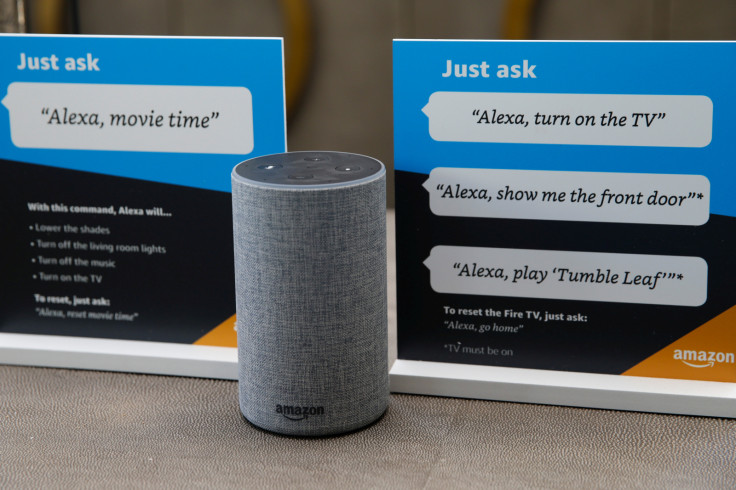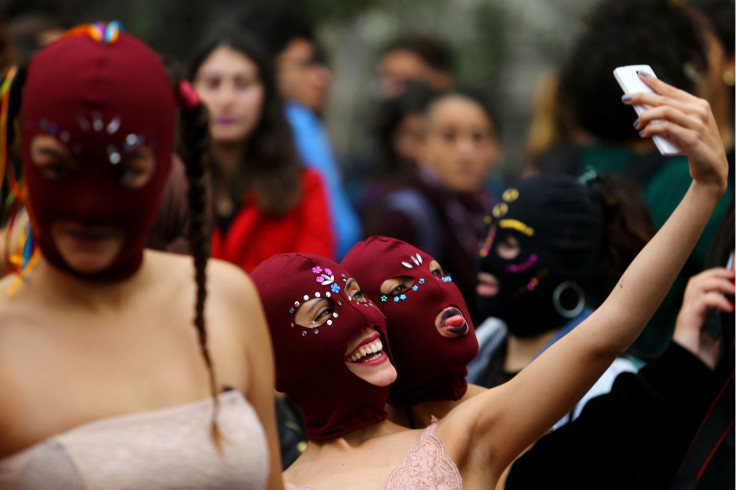There's a reason Siri, Alexa and AI are imagined as female – sexism
Female AI is, more often than not, envisaged in a submissive servile role.
Virtual assistants are increasingly popular and present in our everyday lives: literally with Alexa, Cortana, Holly, and Siri, and fictionally in films Samantha (Her), Joi (Blade Runner 2049) and Marvel's AIs, FRIDAY (Avengers: Infinity War), and Karen (Spider-Man: Homecoming). These names demonstrate the assumption that virtual assistants, from SatNav to Siri, will be voiced by a woman. This reinforces gender stereotypes, expectations, and assumptions about the future of artificial intelligence.
Fictional male voices do exist, of course, but today they are simply far less common. HAL-9000 is the most famous male-voiced Hollywood AI – a malevolent sentient computer released into the public imagination 50 years ago in Stanley Kubrick's 2001: A Space Odyssey.
Male AI used to be more common, specifically in stories where technology becomes evil or beyond our control (like Hal). Female AI on the other hand is, more often than not, envisaged in a submissive servile role. Another pattern concerns whether fictional AI is embodied or not. When it is, it tends to be male, from the Terminator, to Sonny in I, Robot and super-villain Ultron in Avengers: Age of Ultron. Ex Machina's Ava (Alicia Vikander) is an interesting anomaly to the roster of embodied AI and she is seen as a victim rather than an uncontrolled menace, even after she kills her creator.
The Marvel Cinematic Universe, specifically the AI inventions of Tony Stark, and the 2017 film Blade Runner 2049, offer interesting and somewhat problematic takes on the future of AI. The future may be female, but in these imagined AI futures this is not a good thing.

Marvel assistants
At least since the demise of Stark's sentient AI JARVIS in Avengers: Age of Ultron (2013), the fictional AI landscape has become predominately female. Stark's male AI JARVIS – which he modelled and named after his childhood butler – is destroyed in the fight against Ultron (although he ultimately becomes part of a new embodied android character called The Vision). Stark then replaces his operating system not with a back up of JARVIS or another male voiced AI but with FRIDAY (voiced by Kerry Condon).
FRIDAY is a far less prominent character. Stark's AI is pushed into a far more secondary role, one where she is very much the assistant, unlike the complex companion Stark created in JARVIS.
Likewise, in Spider-Man Homecoming, Stark gifts Peter Parker (Tom Holland) his own super suit, which comes with a nameless female-voiced virtual assistant. Peter initially calls her "suit lady", later naming her Karen. Peter imbues his suit with personality and identity by naming it, but you wonder if he would have been so willing to imagine his suit as a caring confidant if it had come with a older-sounding male voice.
Karen is virtual support for the Spider-Man suit, designed to train and enhance Peter's abilities. But in building a relationship of trust with her, Karen takes on the role of a friend for Peter, even encouraging him to approach the girl he likes at school. Here, the female voiced AI takes on a caring role – as a mother or sister – which places the Karen AI into another limiting female stereotype. Female voiced or embodied AI is expected to have a different role to their male-aligned counterparts, perpetuating the idea that women are more likely to be in the role of the secretary rather than the scientist.

Blade Runner's Joi
Another classic example of artificial intelligence can be found in Blade Runner (1982) and its bio-robotic androids, the Replicants. These artificial beings were designed and manufactured to do the jobs that humans in the future didn't want: from colonising dangerous alien planets to serving as sex workers. Although stronger and often smarter than their humans creators, they have a limited lifespan that literally stops them from developing sufficiently to work out how to take over.
The recent Blade Runner 2049 updates the replicants' technology and introduces a purchasable intelligent holographic companion called Joi (Ana de Armas). The Joi we are shown in the film is Agent K's (Ryan Gosling) companion – at first restricted by the projector in his home and later set free, to an extent (Joi is still controlled by K's movements), when K buys himself a portable device called an Emanator. Joi is a logical extension of today's digital assistants and is one of the few female AIs to occupy the narrative foreground.
But at the end of the day, Joi is a corporate creation that is sold as "everything you want to hear and everything you want to see". A thing that can be created, adapted, and sold for consumption. Her holographic body makes her seem a little more real but her purpose is similar to those of the virtual assistants discussed here already: to serve often male masters.
Subservient women
When we can only seemingly imagine an AI as a subservient woman, we reinforce dangerous and outdated stereotypes. What prejudices are perpetuated by putting servile obedient females into our dreams of technology, as well as our current experiences? All this is important because science fiction not only reflects our hopes and fears for the future of science, but also informs it. The imagined futures of the movies inspire those working in tech companies as they develop and update AI, working towards the expectations formed in our fictions.
Just like in the movies, default real-life virtual assistants are often female (Siri; Alexa). But there is some promise of change: having announced in May that their Google Assistant would be getting six new voices, but that the default was named "Holly", Google more recently issued an update that assigns them colours instead of names, done randomly in order to avoid any associations between particular colours and genders.
This is a promising step, but technology cannot progress while the same types of people remain in control of their development and management. Perhaps increased female participation in Silicon Valley could change the way we imagine and develop technology and how it sounds and looks. Diversity in front of and behind the Hollywood camera is equally important in order to improve the way we present our possible futures and so inspire future creators.
Amy Chambers, Senior Lecturer in Film Studies, Manchester Metropolitan University
This article was originally published on The Conversation. Read the original article.

© Copyright IBTimes 2025. All rights reserved.





















